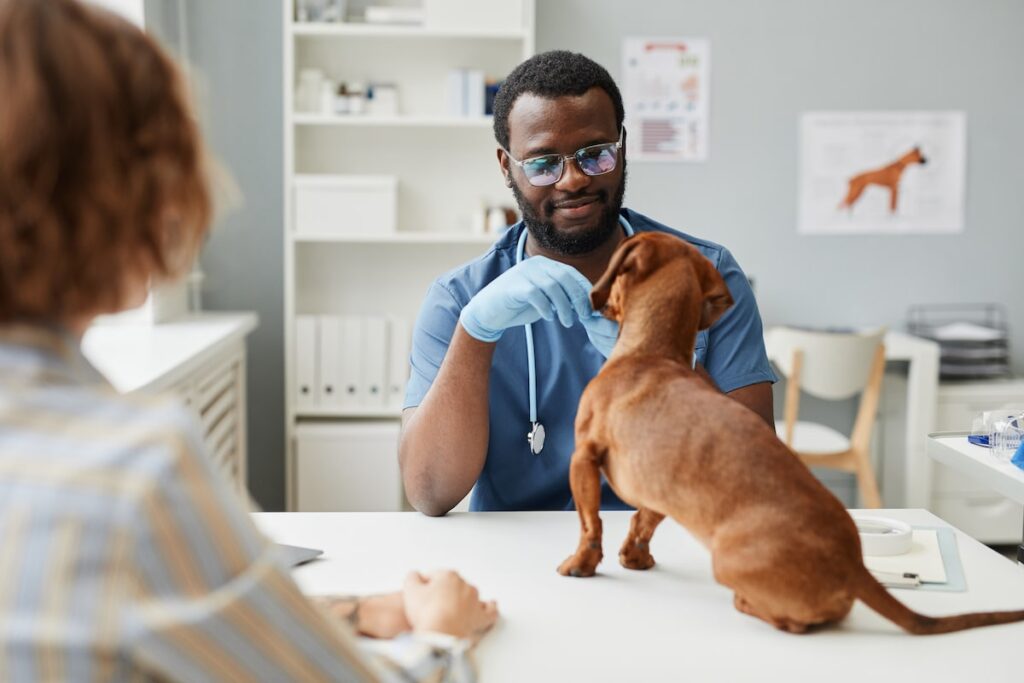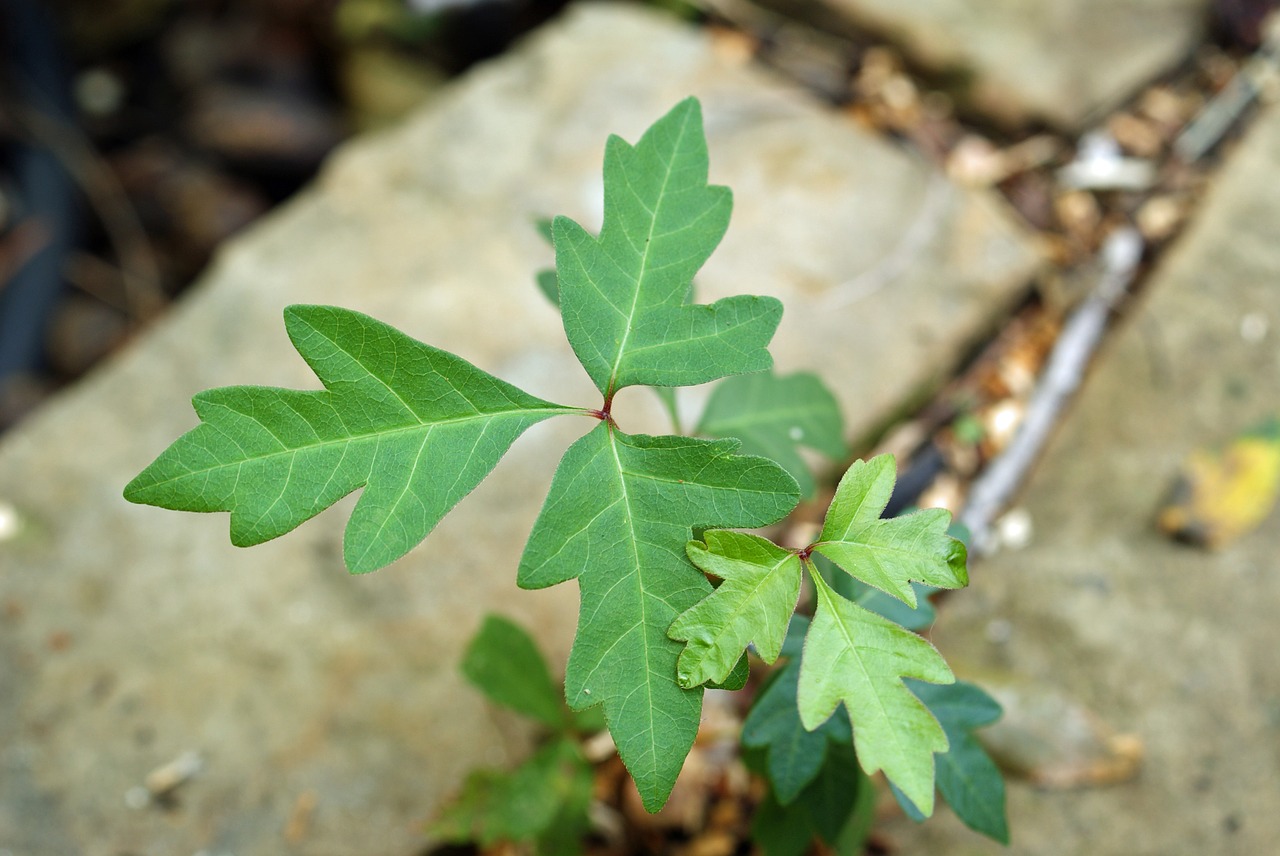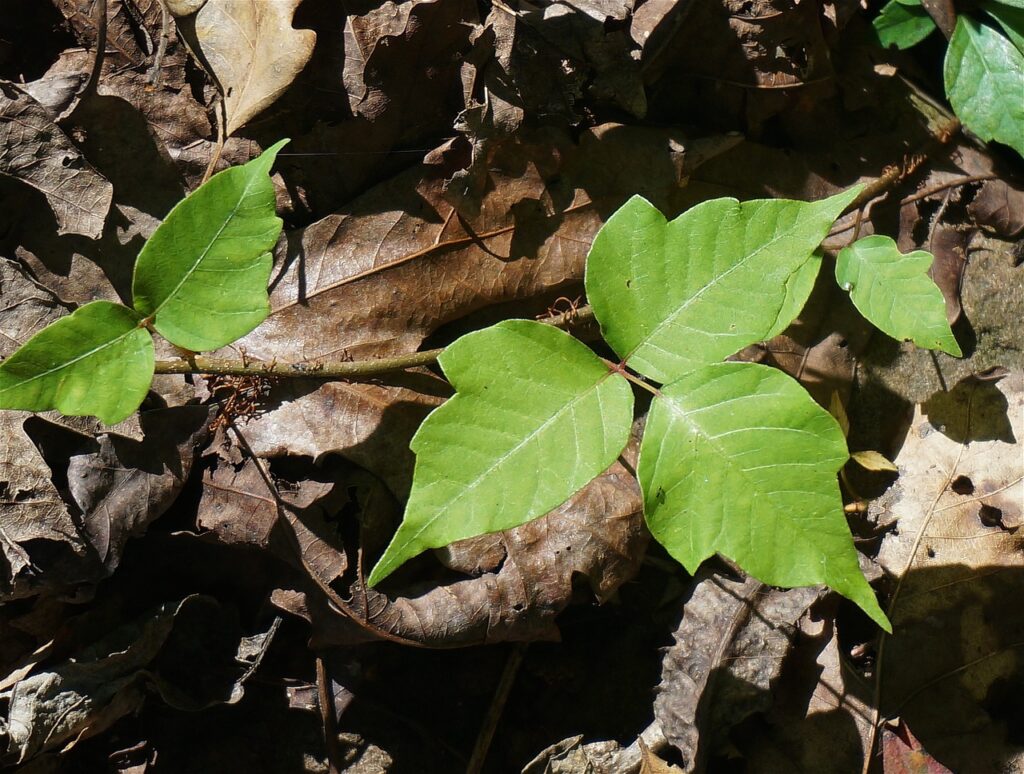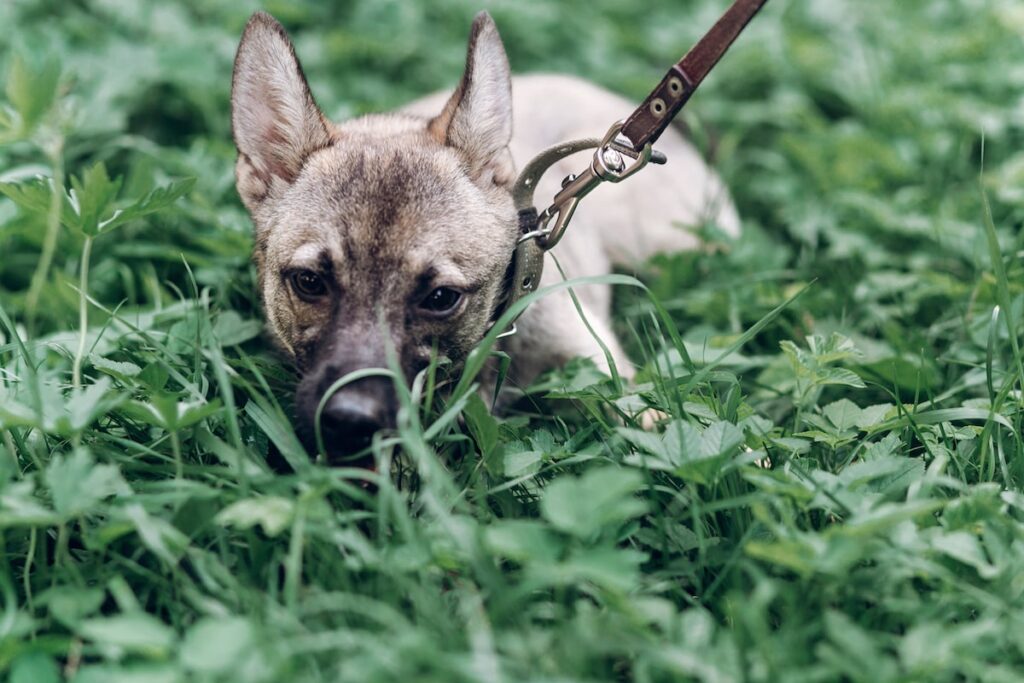Table of Contents
Poison ivy!
The name alone is enough to send shivers down anyone’s spine. And the fact that this plant is considered toxic to humans and pets alike makes it all the more necessary to avoid running into it.
But how serious can poison ivy rash be to your dog? Can dogs get poison ivy in the first place?
Unfortunately, dogs can get poison ivy. The good news is that adverse reactions to poison ivy in dogs are rare. And even if they occur, the side effects are usually milder and last shorter compared to humans. However, it’s still important to proactively prevent your dog from coming into contact with this plant. That’s especially if your pooch has sensitive skin.
This article takes a closer look at the possible interactions between poison ivy and dogs. Among the areas the post shall address include the side effects of poison ivy in dogs, common treatments, and what you can do to prevent your pooch from coming in contact with this toxic plant.
More About Poison Ivy
Poison ivy, also called eastern poison ivy and botanically known as Toxicodendron radicans, is an allergenic flowering plant that belongs in the genus Toxicodendron. The plant is native to Asia and North America.
Despite its name, poison ivy isn’t considered a true ivy. The herb is actually more related botanically to cashews and pistachios.
But while cashews and pistachios produce edible and highly-nutritious seeds, the poison ivy is considered more like an unwelcome weed. Physical contact with this plant causes a condition in humans known as urushiol-induced contact dermatitis. The condition is characterized by an itchy and irritating rash.
Depending on the victim’s skin type, urushiol-induced contact dermatitis can produce a painless or excruciatingly painful rash. The rash may also be accompanied by a reddish or uncolored inflammation, which could result in blisters.
Although originally thought to be problematic to humans alone, numerous anecdotal and even scientific reports now indicate that eastern poison ivy can be just as toxic to animals. It only takes a few seconds of wandering into the woods for your dog to come back itching uncontrollably.
What Makes Poison Ivy So Allergenic?
Poison ivy rash is caused by a clear liquid compound in the poison ivy plant known as urushiol. The same oil is found in other toxic plants, such as the poison oak and poison sumac.
Urushiol triggers allergic reactions in people who’re sensitive to it. Conservative estimates indicate that between 75% and 85% of the global population are sensitive to the oil, with a majority of victims exhibiting severe reactions. A rash from urushiol can last anywhere from five days to several months depending on the exposure level and skin type.
What makes urushiol oil such a big problem is its resilience on surfaces. Findings indicate that the oil may persist for years on clothing, furniture, walls, and other objects where it’s deposited. That only increases your as well as your dog’s exposure to it.
How Might Your Dog Come In Contact With Poison Ivy?
Dogs can come in contact with poison ivy in four different ways;
• Wandering into a patch covered in poison ivy
• Rolling in a patch covered in poison ivy
• Rubbing his nose or muzzle over a poison ivy plant
• Nibbling on poison ivy leaves
Why Is Poison Ivy Rash Milder and More Uncommon In Dogs?
Poison ivy rash can affect humans and canines alike. But the symptoms tend to be milder in dogs. That’s because dogs are covered in protective fur, which minimizes the penetration of urushiol into their skin.
However, dogs with thin fur or short coats may suffer severe adverse effects of poison ivy. Besides, dogs may still carry urushiol in their fur and spread the toxic oil to their owners during regular petting and grooming sessions. And as we’ve already hinted, urushiol can remain on surfaces for years, further increasing the risks of exposure.
What Are The Symptoms Of Poison Ivy Toxicity In Dogs?
The symptoms of poison ivy toxicity in dogs depend primarily on two factors. They include the extent of exposure and the nature of interaction.
A dog that rolled in a patch covered in poison ivy will definitely present more severe side effects than one who was only scraped by a single poison ivy leaf. Similarly, ingesting poison ivy is likely to trigger more worrying symptoms than physical contact.
It’s also important to note that the duration of adverse effects varies. Some dogs may exhibit the first symptoms in as few as three days after exposure while others may take up to one week.

• Intense scratching or licking, especially along the stomach, groin, and nose
• An itchy rash on specific areas or throughout the dog’s body, which may develop into blisters filled with fluids
• Redness and/or inflammation
• Irritability
• Aggression
If your dog happens to have nibbled on poison ivy, you can expect gastrointestinal complications like vomiting, diarrhea, and abdominal discomfort. Vomiting and diarrhea can further escalate to nausea, appetite loss, and dehydration.
There may also be respiratory symptoms like coughing, sneezing, and wheezing. These mainly occur if your dog has sniffed on poison ivy and ended up aspirating some of the toxic urushiol oil.
Without urgent medical interventions, the fluid-filled blisters may pop and spread the rash to other parts of your dog’s body or deposit the toxic urushiol oil on common surfaces. The gastrointestinal and respiratory complications resulting from exposure to poison ivy could also become life-threatening if not addressed with the urgency they deserve.
Are Some Dogs More At Risk Of Poison Ivy Rash Than Others?
Absolutely. Just like humans, poison ivy toxicity affects dogs differently.
For starters, thin-haired, short-haired, and thin-coated dog breeds are the most susceptible to poison ivy rash. Examples of these dogs include;
• The American Hairless
• The Hairless Khala
• The French Bulldog
• The Chinese Crested
• The Peruvian Inca Orchid
• The Xoloitzcuintli
Dogs with sensitive skin are also more prone to getting poison ivy than normal dogs.
Another major risk factor is increased proximity to poison ivy plants. If you like to venture with your pooch into the woods or usually allow the animal to roam freely in the backyard, it may only be a matter of time before he gets afflicted with these toxic plants.
What Are The Treatments For Poison Ivy Poisoning?
Just like the symptoms, the treatments for poison ivy toxicity depend on the nature and extent of exposure.
It’s important to point out that the symptoms resulting from ingesting or aspirating urushiol oil may be too severe to manage at home. In such circumstances, your best bet would be to schedule a visit to the vet.
You should also consider taking your dog for a professional checkup if the side effects from physical contact with poison ivy persist despite your interventions. But in most cases, you can manage the symptoms by washing the urushiol oil off your dog’s body.
Start by putting on protective gear. That includes a pair of rubber gloves, a long-sleeved shirt, pants, and boots or closed shoes.
Then, bathe your dog using warm water and pet-safe oatmeal shampoo. Avoid using hot water as it only opens up the pores on your dog’s coat, thereby providing a passageway for the urushiol oil to penetrate further into the dog’s skin.
Lastly, dry up the bathed area using a dog towel, then throw the towel plus your clothing into the laundry basket.
In addition to pet-safe shampoos, there are many other remedies you can use to clean poison ivy oil off your dog’s coat. Examples include aloe vera, plantain leaf, baking soda, cucumber slices, and calamine lotion. You might also consider alcoholic compounds like ethanol provided you do not use them around the muzzle or genitals.
Final Word
Poison ivy is a toxic plant that can trigger a host of adverse reactions in dogs. It’s even worse considering the numerous ways your pooch may be exposed to this plant.
Fortunately, there are various methods to mitigate the severity of poison ivy symptoms in dogs. Better yet, you can reduce your dog’s exposure to poison ivy by clearing these plants from your compound and always keeping the dog on a leash when venturing outdoors.
As a parting shot, remember to call your vet if the symptoms of poison ivy persist despite rigorous at-home treatments.




